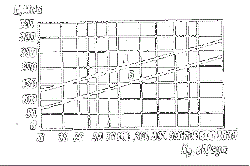Title of the lesson: The Fly High Review 6
Содержание книги
- PB: page – 5, 1. Write the names.
- PB page 11, 3. Read and write. Then colour.
- PB: page 14, 1. Read and answer.
- Title of the lesson: The postman comes at seven.
- PB: page 20, 1. Choose and write.
- PB page 25, 3. Listen and match. Then write.
- SB: Page 30, 1. Say it with Sally.
- PB: page 33, 3. Listen and stick. Then write.
- PB page 35, 4. Write with Karla.
- PB: page 38, 1. Choose and write.
- PB: page 42, 1. Listen and match.
- PB page 45, 3. Ask and answer.
- Title of the lesson: We’ve got some oranges
- PB: page 50, 1. Choose and write.
- PB page 53, 2. Write with Karla.
- Title of the lesson: Trumpet is stronger.
- PB page 59, 3. Choose and write.
- Sally’s story: Amazing world.
- Read with Trumpet: Amazing holidays
- PB page 71, 2. Choose and write.
- Title of the lesson: We had a wonderful time.
- PB page 77, 2. What about you? Write.
- Title of the lesson: The Fly High Review 6
- PB: page 82, 1. Choose and write.
- PB page 77, 3. Write must or mustn’t
- Title of the lesson: We’ll meet again.
- PB: page 90, 1. Read and answer.
LESSON 38
Skills to be emphasized:
- listening
- Speaking
Objectives: to review Lessons 21-24 and prepare for Progress Review 6
Vocabulary Review: vocabulary from Lessons 21-24
Grammar Review: grammar from Lessons 21-24
Materials: Class CD, card/ paper,scissors, glue for the project
Procedure of the lesson
Warm-up page 80
 T. goes round the class asking every child to tell him/her one thing they did yesterday. T. goes round the class asking every child to tell him/her one thing they did yesterday.
Review
 T. checks the homework from the previous lesson. T. checks the homework from the previous lesson.
 Before doing an exercise with the class, briefly review the relevant vocabulary and grammar. T. uses flashcards, questions and answers, etc. Before doing an exercise with the class, briefly review the relevant vocabulary and grammar. T. uses flashcards, questions and answers, etc.
Presentation
PB: page 80, 1. Write.
 T. does the example with the class and asks the children to write. T. monitors and helps where necessary. T. does the example with the class and asks the children to write. T. monitors and helps where necessary.
 T. asks the children to make sentences with the verbs. T. asks the children to make sentences with the verbs.
Practice
PB page 80, 2. Match.
 T. does the example with the class and asks the children to match the verbs. T. monitors and helps where necessary. T. does the example with the class and asks the children to match the verbs. T. monitors and helps where necessary.
PB page 80, 3. Write.
 T. does the example with the class: T. asks the children to look at the picture and complete the other sentences. T. monitors and helps where necessary. T. does the example with the class: T. asks the children to look at the picture and complete the other sentences. T. monitors and helps where necessary.
PB page 80, 4. Read and answer.
 T. does the example with the class and asks the children to answer the other questions referring to the text. T. monitors and helps where necessary. T. does the example with the class and asks the children to answer the other questions referring to the text. T. monitors and helps where necessary.
 T. asks the children to practice the questions/answers in pairs. T. asks the children to practice the questions/answers in pairs.
PB page 80, 4. Listen and circle.
 T. plays the CD. T. does the example with the class. T. plays the CD. T. does the example with the class.
 T. plays the CD again. T. stops after each sentences to give the children time to circle the correct answer. T. plays the CD again. T. stops after each sentences to give the children time to circle the correct answer.
PB page 81, 5. Ask and answer. Say Yes I did or No, I didn’t.
 T. does the first question with the class: T. asks different children to tell the T. their answer. T. does the first question with the class: T. asks different children to tell the T. their answer.
 T. asks the children to write their answers. T. monitors and helps where necessary. T. asks the children to write their answers. T. monitors and helps where necessary.
 T. puts the children in pairs. They take turns asking and answering the questions. T. puts the children in pairs. They take turns asking and answering the questions.
My project: Make a picture diary.
 T. asks the children to look at the picture diary and read the sentences. T. asks the children to look at the picture diary and read the sentences.
 T. distributes the card/paper. T. asks the children to divide the day of the week. T. asks them to draw and colour a picture for each day. They can cut out and glue on magazine pictures if they have brought any. T. distributes the card/paper. T. asks the children to divide the day of the week. T. asks them to draw and colour a picture for each day. They can cut out and glue on magazine pictures if they have brought any.
 T. asks te children to write sentences for each day of the week. T. asks te children to write sentences for each day of the week.
 T. asks the children to come to the front, holds up their picture diary and read out one of their sentences. T. asks the children to come to the front, holds up their picture diary and read out one of their sentences.
Review of Cycle 6
 T. can now review the language the children have learned in Cycle 5, in the following ways. T. can now review the language the children have learned in Cycle 5, in the following ways.
My Picture Dictionary
 T. can use Picture Dictionary for Cycle 6 to help the children review the words they have learned. T. can see Introduction p.vii for guidance on using the picture dictionary. T. can use Picture Dictionary for Cycle 6 to help the children review the words they have learned. T. can see Introduction p.vii for guidance on using the picture dictionary.
Read with Trumpet: A week in New York
 T. does the Read with Trumpet lesson on p.101 of the Pupil’s Book in the next class. T. follows the accompanying teaching notes on p. 101 of this Teacher’s Guide. T. does the Read with Trumpet lesson on p.101 of the Pupil’s Book in the next class. T. follows the accompanying teaching notes on p. 101 of this Teacher’s Guide.
Activity Book
 T. tells the children to complete the Review exercises on pp.78-79 in their Activity Book for homework. T. tells the children to complete the Review exercises on pp.78-79 in their Activity Book for homework.
 T. does the last section, My English together in class in the next lesson. T. uses the sentences as prompts for oral practice. Then T. tells the children to colour the face they think best represents their efforts. T. can see the Introduction p. vii for guidance. T. does the last section, My English together in class in the next lesson. T. uses the sentences as prompts for oral practice. Then T. tells the children to colour the face they think best represents their efforts. T. can see the Introduction p. vii for guidance.
Progress Review 6
 T. uses photocopiable Progress Review 6 as a test in class. T. can see the Active Teach Resources section. T. uses photocopiable Progress Review 6 as a test in class. T. can see the Active Teach Resources section.
Title of the lesson: Can we make a sandcastle?
Lesson 39
Skills to be emphasized:
- listening
- Speaking
Objectives: to ask for permission
Vocabulary: sandcastle, armbands, bucket, spade, sun
Grammar: Can I/you/he/she/it/we they …? Yes, I/you/he/she/it/we/they can./No, I/you/he/she/it/we/they can’t.
Materials: Class CD, Lesson 25 flashcards
Procedure of the lesson
Warm-up page 82
 T. puts the children in small groups. They take turns miming something they do at the beach, e.g. making a sanfcastle. Putting sun cream/armbands on, swimming, diving, snorekelling, etc. their friends guess. T. puts the children in small groups. They take turns miming something they do at the beach, e.g. making a sanfcastle. Putting sun cream/armbands on, swimming, diving, snorekelling, etc. their friends guess.
Review
 T. checks the homework from the previous lesson. T. checks the homework from the previous lesson.
Presentation
PB page 82, Vocabulary
 T. says Open your book at page 82. T. says Open your book at page 82.
 T. presents the new vocabulary with the Lesson’s flashcards. T. presents the new vocabulary with the Lesson’s flashcards.
 T. uses extra repetition to practice the pronunciation of the sandcastle, bucket, spade T. uses extra repetition to practice the pronunciation of the sandcastle, bucket, spade
Can we make a sandcastle.
 Pre-reading: T. asks the children to look at the pictures. T. asks (in L1 where necessary) Where are Sally and the animals? Who wants an ice cream? Who has got armbands? Pre-reading: T. asks the children to look at the pictures. T. asks (in L1 where necessary) Where are Sally and the animals? Who wants an ice cream? Who has got armbands?
 T. the follows the steps for presenting stories. T. the follows the steps for presenting stories.
 T. asks some questions to check understanding and engages the children. T. asks (avoiding L1 if possible) Who has got a bucket and spade? Who is pink and black? Why? Do you like to go to the beach? How often do you go to the beach? T. asks some questions to check understanding and engages the children. T. asks (avoiding L1 if possible) Who has got a bucket and spade? Who is pink and black? Why? Do you like to go to the beach? How often do you go to the beach?
|



 T. goes round the class asking every child to tell him/her one thing they did yesterday.
T. goes round the class asking every child to tell him/her one thing they did yesterday.


